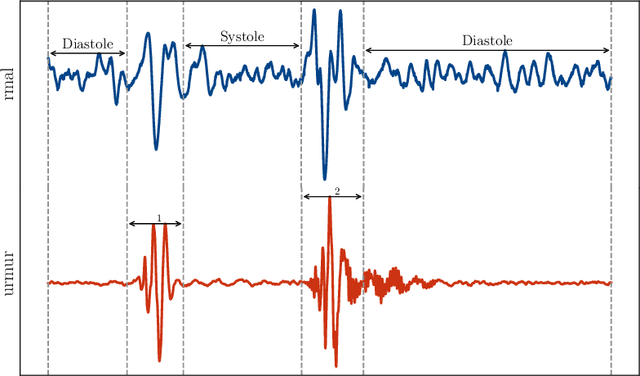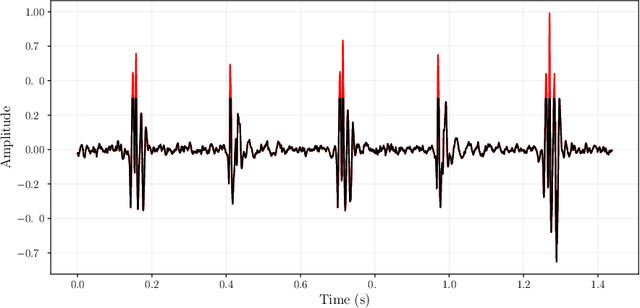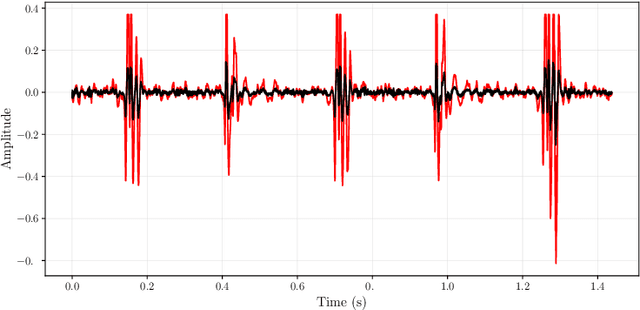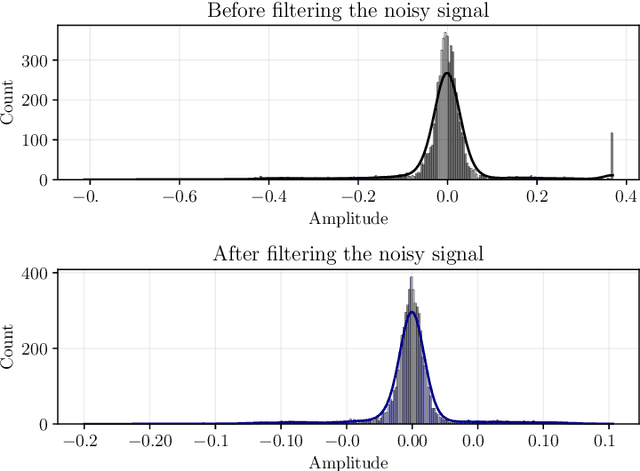Md Rakibul Hasan
PC-SRGAN: Physically Consistent Super-Resolution Generative Adversarial Network for General Transient Simulations
May 10, 2025



Abstract:Machine Learning, particularly Generative Adversarial Networks (GANs), has revolutionised Super Resolution (SR). However, generated images often lack physical meaningfulness, which is essential for scientific applications. Our approach, PC-SRGAN, enhances image resolution while ensuring physical consistency for interpretable simulations. PC-SRGAN significantly improves both the Peak Signal-to-Noise Ratio and the Structural Similarity Index Measure compared to conventional methods, even with limited training data (e.g., only 13% of training data required for SRGAN). Beyond SR, PC-SRGAN augments physically meaningful machine learning, incorporating numerically justified time integrators and advanced quality metrics. These advancements promise reliable and causal machine-learning models in scientific domains. A significant advantage of PC-SRGAN over conventional SR techniques is its physical consistency, which makes it a viable surrogate model for time-dependent problems. PC-SRGAN advances scientific machine learning, offering improved accuracy and efficiency for image processing, enhanced process understanding, and broader applications to scientific research. The source codes and data will be made publicly available at https://github.com/hasan-rakibul/PC-SRGAN upon acceptance of this paper.
Tabular foundation model to detect empathy from visual cues
Apr 15, 2025Abstract:Detecting empathy from video interactions is an emerging area of research. Video datasets, however, are often released as extracted features (i.e., tabular data) rather than raw footage due to privacy and ethical concerns. Prior research on such tabular datasets established tree-based classical machine learning approaches as the best-performing models. Motivated by the recent success of textual foundation models (i.e., large language models), we explore the use of tabular foundation models in empathy detection from tabular visual features. We experiment with two recent tabular foundation models $-$ TabPFN v2 and TabICL $-$ through in-context learning and fine-tuning setups. Our experiments on a public human-robot interaction benchmark demonstrate a significant boost in cross-subject empathy detection accuracy over several strong baselines (accuracy: $0.590 \rightarrow 0.730$; AUC: $0.564 \rightarrow 0.669$). In addition to performance improvement, we contribute novel insights and an evaluation setup to ensure generalisation on unseen subjects in this public benchmark. As the practice of releasing video features as tabular datasets is likely to persist due to privacy constraints, our findings will be widely applicable to future empathy detection video datasets as well.
Labels Generated by Large Language Model Helps Measuring People's Empathy in Vitro
Jan 01, 2025Abstract:Large language models (LLMs) have revolutionised numerous fields, with LLM-as-a-service (LLMSaaS) having a strong generalisation ability that offers accessible solutions directly without the need for costly training. In contrast to the widely studied prompt engineering for task solving directly (in vivo), this paper explores its potential in in-vitro applications. These involve using LLM to generate labels to help the supervised training of mainstream models by (1) noisy label correction and (2) training data augmentation with LLM-generated labels. In this paper, we evaluate this approach in the emerging field of empathy computing -- automating the prediction of psychological questionnaire outcomes from inputs like text sequences. Specifically, crowdsourced datasets in this domain often suffer from noisy labels that misrepresent underlying empathy. By leveraging LLM-generated labels to train pre-trained language models (PLMs) like RoBERTa, we achieve statistically significant accuracy improvements over baselines, achieving a state-of-the-art Pearson correlation coefficient of 0.648 on NewsEmp benchmarks. In addition, we bring insightful discussions, including current challenges in empathy computing, data biases in training data and evaluation metric selection. Code and LLM-generated data are available at https://github.com/hasan-rakibul/LLMPathy (available once the paper is accepted).
MADE-for-ASD: A Multi-Atlas Deep Ensemble Network for Diagnosing Autism Spectrum Disorder
Jul 09, 2024



Abstract:In response to the global need for efficient early diagnosis of Autism Spectrum Disorder (ASD), this paper bridges the gap between traditional, time-consuming diagnostic methods and potential automated solutions. We propose a multi-atlas deep ensemble network, MADE-for-ASD, that integrates multiple atlases of the brain's functional magnetic resonance imaging (fMRI) data through a weighted deep ensemble network. Our approach integrates demographic information into the prediction workflow, which enhances ASD diagnosis performance and offers a more holistic perspective on patient profiling. We experiment with the well-known publicly available ABIDE (Autism Brain Imaging Data Exchange) I dataset, consisting of resting state fMRI data from 17 different laboratories around the globe. Our proposed system achieves 75.20% accuracy on the entire dataset and 96.40% on a specific subset $-$ both surpassing reported ASD diagnosis accuracy in ABIDE I fMRI studies. Specifically, our model improves by 4.4 percentage points over prior works on the same amount of data. The model exhibits a sensitivity of 82.90% and a specificity of 69.70% on the entire dataset, and 91.00% and 99.50%, respectively, on the specific subset. We leverage the F-score to pinpoint the top 10 ROI in ASD diagnosis, such as \emph{precuneus} and anterior \emph{cingulate/ventromedial}. The proposed system can potentially pave the way for more cost-effective, efficient and scalable strategies in ASD diagnosis. Codes and evaluations are publicly available at TBA.
FunnelNet: An End-to-End Deep Learning Framework to Monitor Digital Heart Murmur in Real-Time
May 10, 2024



Abstract:Objective: Heart murmurs are abnormal sounds caused by turbulent blood flow within the heart. Several diagnostic methods are available to detect heart murmurs and their severity, such as cardiac auscultation, echocardiography, phonocardiogram (PCG), etc. However, these methods have limitations, including extensive training and experience among healthcare providers, cost and accessibility of echocardiography, as well as noise interference and PCG data processing. This study aims to develop a novel end-to-end real-time heart murmur detection approach using traditional and depthwise separable convolutional networks. Methods: Continuous wavelet transform (CWT) was applied to extract meaningful features from the PCG data. The proposed network has three parts: the Squeeze net, the Bottleneck, and the Expansion net. The Squeeze net generates a compressed data representation, whereas the Bottleneck layer reduces computational complexity using a depthwise-separable convolutional network. The Expansion net is responsible for up-sampling the compressed data to a higher dimension, capturing tiny details of the representative data. Results: For evaluation, we used four publicly available datasets and achieved state-of-the-art performance in all datasets. Furthermore, we tested our proposed network on two resource-constrained devices: a Raspberry PI and an Android device, stripping it down into a tiny machine learning model (TinyML), achieving a maximum of 99.70%. Conclusion: The proposed model offers a deep learning framework for real-time accurate heart murmur detection within limited resources. Significance: It will significantly result in more accessible and practical medical services and reduced diagnosis time to assist medical professionals. The code is publicly available at TBA.
A Deep Learning Approach to Diabetes Diagnosis
Mar 12, 2024



Abstract:Diabetes, resulting from inadequate insulin production or utilization, causes extensive harm to the body. Existing diagnostic methods are often invasive and come with drawbacks, such as cost constraints. Although there are machine learning models like Classwise k Nearest Neighbor (CkNN) and General Regression Neural Network (GRNN), they struggle with imbalanced data and result in under-performance. Leveraging advancements in sensor technology and machine learning, we propose a non-invasive diabetes diagnosis using a Back Propagation Neural Network (BPNN) with batch normalization, incorporating data re-sampling and normalization for class balancing. Our method addresses existing challenges such as limited performance associated with traditional machine learning. Experimental results on three datasets show significant improvements in overall accuracy, sensitivity, and specificity compared to traditional methods. Notably, we achieve accuracies of 89.81% in Pima diabetes dataset, 75.49% in CDC BRFSS2015 dataset, and 95.28% in Mesra Diabetes dataset. This underscores the potential of deep learning models for robust diabetes diagnosis. See project website https://steve-zeyu-zhang.github.io/DiabetesDiagnosis/
Empathy Detection Using Machine Learning on Text, Audiovisual, Audio or Physiological Signals
Oct 30, 2023Abstract:Empathy is a social skill that indicates an individual's ability to understand others. Over the past few years, empathy has drawn attention from various disciplines, including but not limited to Affective Computing, Cognitive Science and Psychology. Empathy is a context-dependent term; thus, detecting or recognising empathy has potential applications in society, healthcare and education. Despite being a broad and overlapping topic, the avenue of empathy detection studies leveraging Machine Learning remains underexplored from a holistic literature perspective. To this end, we systematically collect and screen 801 papers from 10 well-known databases and analyse the selected 54 papers. We group the papers based on input modalities of empathy detection systems, i.e., text, audiovisual, audio and physiological signals. We examine modality-specific pre-processing and network architecture design protocols, popular dataset descriptions and availability details, and evaluation protocols. We further discuss the potential applications, deployment challenges and research gaps in the Affective Computing-based empathy domain, which can facilitate new avenues of exploration. We believe that our work is a stepping stone to developing a privacy-preserving and unbiased empathic system inclusive of culture, diversity and multilingualism that can be deployed in practice to enhance the overall well-being of human life.
 Add to Chrome
Add to Chrome Add to Firefox
Add to Firefox Add to Edge
Add to Edge